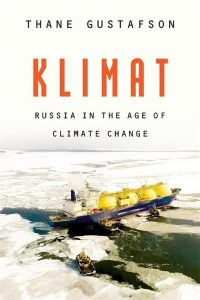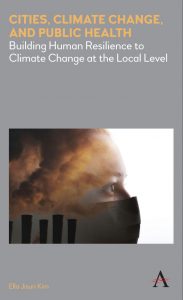How Neuroscience Can Help Solve Our Environmental Crisis
Reviewed by Sudhirendar Sharma
Mind over matter that seriously matters
Minding the Climate: How Neuroscience Can Help Solve Our Environmental Crisis, by Ann-Christine Duhaime, M.D., Harvard University Press, 2022, 336 pp.
To achieve climate change goals, a neuro-scientist urges the world to work on the mind.
The greatest paradox of our time is that while climate change has widely been recognized as an urgent problem, it does not press the emergency button for individual and collective action to counter it. Knowing well the root cause and the possible solutions to the problem, why does it gets pushed on to others to fix it? Why are we hardwired not to change our behaviour and consumer tendencies? Simply put, it is the neuroscience of decision making that works to prioritize short-term survival over long-term consequences. No wonder, the risk of anticipated 2°C rise in temperature before the close of the century remains disconcerting.
In Minding the Climate, Ann-Christine Duhaime, a professor of neurosurgery at the Harvard Medical School, explores why changing behaviour in response to the climate crises remains challenging. Having lived life for eons on resource scarcity, human mind responds to better rewards for changing the old behaviour. If a behaviour isn’t perceived as immediately rewarding, we probably won’t change it – never mind that we know we should. In a market economy, just giving people information without incentives and rewards doesn’t work to change consumptive behaviour. Writing lullabies won’t cure opioid addiction by itself.
Environmental issues have been known to present challenges for behaviour change, in part because the phenomenon and the fix are many steps removed from our immediate sensory perception. While the perception may have started changing due to increasing frequency of climatic events in recent times, we are physiologically not equipped with carbon dioxide sensors to reflect strong personal threatening experience to affect behavioural change. Add to this the fact that behaviour change research has focused on choices that individuals make in their domestic lives, rather than on a more collective and political sphere. Furthermore, the invisibility of greenhouses gases adds to the visible challenge.
Duhaime presents a systematic study of the human brain – from understanding its evolutionary origin to strategies for its pro-environmental shift. Taking a deep dive into the human decision-making apparatus, she found that the brain is heavily influenced by its evolutionary design but is also exquisitely flexible. The brain design both constrains and frees us. By linking neuroscience with evolutionary biology, consumer psychology and environmental science, the author reflects hope that humans do in fact have the capacity to change. Minding the Climate is a groundbreaking work on how we might leverage our brains to fight climate change.
It is a thinking person’s guide to encourage our neurological circuits to embrace new rewards. To demonstrate how indeed this could be possible, the Green Children’s Hospital has been initiated by the author and her colleagues as a prototype that makes connection between the environment and health. No reward is good enough for people to see their loved children have a good life. It works both ways as it not only helps cut down emissions from the sector that contributes 8 percent to the atmospheric carbon load but also reminds people that hospital patients looking at trees recover faster than those who look at the brick wall. Such small, incremental steps that individuals take are necessary to look at rewards differently.
Duhaime is not suggesting a quick fix though. The task is to understand how our ingrained tendencies could be overridden by our brain’s capacity to adapt. Minding the Climate is a pioneering work on a subject that has so far not been considered in the global discourse on climate change. It is a work in progress and will only be considered complete when people in the 20-tons-of-carbon-emissions-a-year consider themselves a burden on the society. Our brain has got us to this point, it alone will take us into the future of possibilities.
First published in The Hindu on July 2, 2023.




